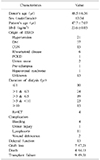1. Wolfe RA, Ashby VB, Milford EL, Ojo AO, Ettenger RE, Agodoa LY, et al. Comparison of mortality in all patients on dialysis, patients on dialysis awaiting transplantation, and recipients of a first cadaveric transplant. N Engl J Med. 1999; 341:1725–1730.

2. Rodgers SK, Sereni CP, Horrow MM. Ultrasonographic evaluation of the renal transplant. Radiol Clin North Am. 2014; 52:1307–1324.

3. Nankivell BJ, Kuypers DR. Diagnosis and prevention of chronic kidney allograft loss. Lancet. 2011; 378:1428–1437.

4. Fernández-Ibieta M, Nortes-Cano L, Guirao-Piñera MJ, Zambudio-Carmona G, Ruiz-Jiménez JI. Radiation-free monitoring in the long-term follow-up of pyeloplasty: are ultrasound new parameters good enough to evaluate a successful procedure? J Pediatr Urol. 2016; 12:230.e1–230.e7.

5. Matas AJ, Smith JM, Skeans MA, Thompson B, Gustafson SK, Schnitzler MA, et al. OPTN/SRTR 2012 annual data report: kidney. Am J Transplant. 2014; 14 Suppl 1:11–44.

6. Friedewald SM, Molmenti EP, Friedewald JJ, Dejong MR, Hamper UM. Vascular and nonvascular complications of renal transplants: sonographic evaluation and correlation with other imaging modalities, surgery, and pathology. J Clin Ultrasound. 2005; 33:127–139.

7. Nezami N, Tarzamni MK, Argani H, Nourifar M. Doppler ultrasonographic indexes in kidney transplant recipients: its relationship with kidney function. Iran J Kidney Dis. 2007; 1:82–87.
8. Perrella RR, Duerinckx AJ, Tessler FN, Danovitch GM, Wilkinson A, Gonzalez S, et al. Evaluation of renal transplant dysfunction by duplex Doppler sonography: a prospective study and review of the literature. Am J Kidney Dis. 1990; 15:544–550.

9. Granata A, Di Nicolò P, Scarfia VR, Insalaco M, Lentini P, Veroux M, et al. Renal transplantation parenchymal complications: what Doppler ultrasound can and cannot do. J Ultrasound. 2014; 18:109–116.

10. Mehrsai A, Salem S, Ahmadi H, Baradaran N, Taherimahmoudi M, Nikoobakht MR, et al. Role of resistive index measurement in diagnosis of acute rejection episodes following successful kidney transplantation. Transplant Proc. 2009; 41:2805–2807.

11. Hamano K, Nitta A, Ohtake T, Kobayashi S. Associations of renal vascular resistance with albuminuria and other macroangiopathy in type 2 diabetic patients. Diabetes Care. 2008; 31:1853–1857.

12. Parolini C, Noce A, Staffolani E, Giarrizzo GF, Costanzi S, Splendiani G. Renal resistive index and long-term outcome in chronic nephropathies. Radiology. 2009; 252:888–896.

13. Okura T, Kurata M, Irita J, Enomoto D, Jotoku M, Nagao T, et al. Renal resistance index is a marker of future renal dysfunction in patients with essential hypertension. J Nephrol. 2010; 23:175–180.
14. Radermacher J, Mengel M, Ellis S, Stuht S, Hiss M, Schwarz A, et al. The renal arterial resistance index and renal allograft survival. N Engl J Med. 2003; 349:115–124.

15. Kolonko A, Chudek J, Zejda JE, Wiecek A. Impact of early kidney resistance index on kidney graft and patient survival during a 5-year follow-up. Nephrol Dial Transplant. 2012; 27:1225–1231.

16. Impedovo SV, Martino P, Palazzo S, Ditonno P, Tedeschi M, Giangrande F, et al. Value of the resistive index in patient and graft survival after kidney transplant. Arch Ital Urol Androl. 2012; 84:279–282.
17. Naesens M, Heylen L, Lerut E, Claes K, De Wever L, Claus F, et al. Intrarenal resistive index after renal transplantation. N Engl J Med. 2013; 369:1797–1806.





 PDF
PDF ePub
ePub Citation
Citation Print
Print






 XML Download
XML Download